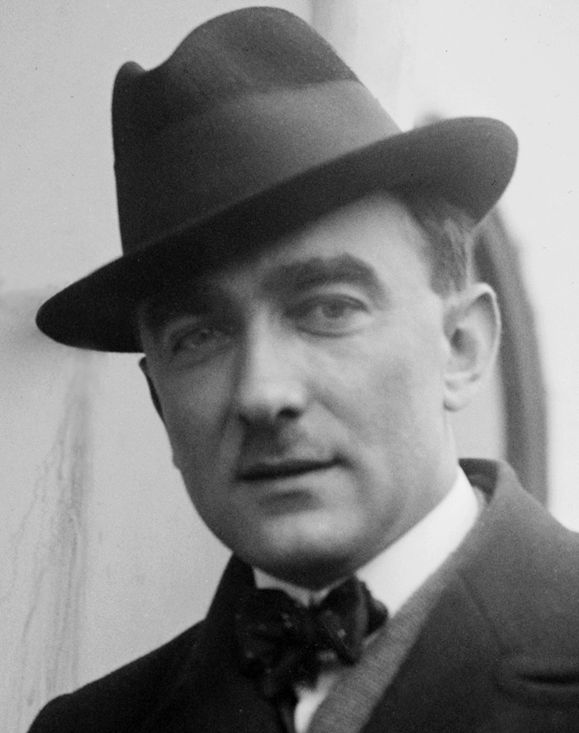
Uwoz mamo roz from the Cycle of Kurpie Songs Op. 58 by Karol Szymanowski in Light of Its Folk Original
Contents
Introduction
Context
Textual Content
Form
Modal Material
Melodic and Rhythmic Aspect
Expression
Conclusion
Notes
Introduction
‘I would like very much for the young generation of musicians to understand what richness, revitalising our anaemic music, lies hidden in that “barbarity” that I have finally discovered and understood for myself’[1] – that is how Karol Szymanowski expressed his enthusiastic opinion on genuine Kurpian folk chants, which he was able to familiarise himself with owing to the efforts of Rev. Władysław Skierkowski [2]. The composer’s encounter with Kurpie folk music resulted in the creation of two cycles of works: the non-opus Six Kurpie Songs for a mixed choir a capella of 1928, and Kurpie Songs for voice and piano Op. 58 of 1932.
Szymanowski was, to a varying extent, interested in folk music throughout the subsequent stages of his work; the transformations encompassed not only the manner of elaborating the adapted material, but also the very notion of referring thereto. Kurpie Songs Op. 58, the collection that included the piece analysed here, are an example of the use of authentic folklore [3], it is a typical feature of the final, national phase [4] in the composer’s work (the 1920s and the 1930s). Allusions to folklore do not stem here from the desire to foster the notion of ‘raising spirits,’ being instead aimed at taking advantage of novel, unusual musical solutions. So it is because Szymanowski, ‘following the example of Bartók and Stravinsky, searches for inspirations in the deepest, archaic layers of Polish folklore, regarded as the point of origin for new musical ideas’ [5].
The level of relatedness between folk songs and their artistic elaboration in Szymanowski’s Kurpie Songs Op. 58 varies; however, the composer never intervenes in the organic structure of the original pieces. That observation finds corroboration in the analysis presented below, which focuses on the cycle’s third piece, entitled Uwoz mamo roz [Tell me, mother]. The paper compares the song with its folk original. Among the aspects considered are: its textual layer, the formal structure, the order of modes used, its melody and rhythmic element and its expression.
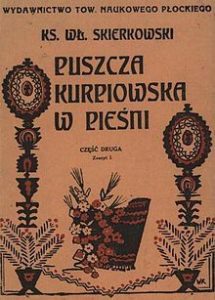
Figure 1. The Title page of the first edition of the collection Puszcza Kurpiowska w pieśni by Rev. Władysław Skierkowski (1929) [6]
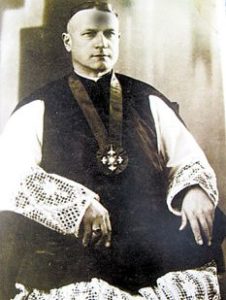
Figure 2. Rev. Władysław Skierkowski (1886–1941) [7]
The three volumes of folk chants Puszcza kurpiowska w pieśni compiled by Władysław Skierkowski were published in the 1920s and the 1930s. Together, they comprise several hundred songs, varied in their character (including wedding, love, orphan, war and satirical songs, etc.). Despite their diverse expression, Kurpie songs share certain common, regional characteristics [8], among those: frequent use of the pentatonic scale, ornamental melodics, slow tempo, variable metre, frequent use of triplets and the apocope (a performance manner consisting in the elision of the final phone or syllable). Another element they share is the text, created in the Kurpie dialect, typical for the Kurpie Forest [9]. The song Uwoz mamo roz was featured in the first fascicule of Rev. Skierkowski’s collection [10], the part thereof dedicated to courtship and love folk songs. It was performed for the priest on 16 August 1928, by an 18-year-old Marianna Zapert from the village of Czarnia. The melody represents the genre of the forest (green) songs, i.e., songs ‘sad and continuous, in their sadness and continuity – reminiscent of the poor soil of the Kurpie region, with its eternally rustling forests, woodlands and immense grasslands’ [11].
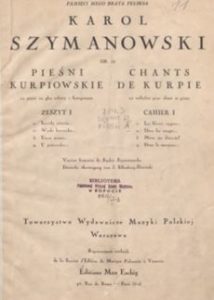
Figure 3. The title page of the first edition of the first fascicule of Pieśni kurpiowskie Op. 58 by Karol Szymanowski (1934) [12]
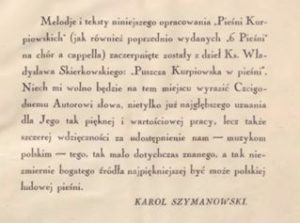
Figure 4. The third page of the collection – the composer’s acknowledgements to Rev. Władysław Skierkowski [13]
Uwoz mamo roz by Karol Szymanowski is the third of twelve pieces comprising the collection Kurpie Songs Op. 58. The folk songs used by the composer in the said cycle differ greatly in their melodic and rhythmic structure, character and expression. However, even though they are so varied, they share themes of love, recurring motifs–symbols (e.g., a bird in the songs Lecioły zórazie and Wysła burzycka, a horse in the songs Bzicem kunia and Zarzyjze kuniu), as well as their musical elaboration (which features, among other notions, modal material and the timbre function of the piano part). The order of songs in the cycle is deliberate, not accidental, as corroborated by the composer’s statement: ‘I wanted each of the three fascicules (four songs in each) to have a logical structure’ [14].
Textual Content
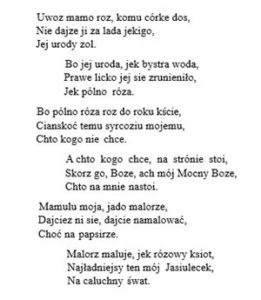
Figure 5. The text of the folk song Uwoz mamo roz [15]
The text of the original song is centred around one of the typical motifs of folk art, i.e., unwanted marriage. The speaker in the original song – a girl – addresses her mother, pleading with her to chose the husband for her daughter wisely, not to give her hand in marriage to a random suitor (‘nie doze ji za lada jekiego’ [do not give her to anyone]. The speaker tries to convince the woman using imperative forms (‘uwoz’ [tell], ‘dojze’ [give]), making efforts to provoke her compassion (‘jej urody zal’ [such a waste of her beauty]), lastly, by confessing her feelings for another (‘cianskoć temu syrcoziu mojemu / chto kogo nie chce’ [it is hard on that heart of mine / to not be wanted by one]). Deep in her heart, the girl is aware that she will not avoid the despised wedlock; ultimately, she turns to God, entreating Him to protect her against the one preying on her (‘skorz go Boze, ach mój Mocny Boze / chto na mnie nastoi’ [punish him, God, oh my Mighty God / he who preys on me]). Accepting her fate, the protagonist asks only for a portrait of her lover (‘dajciez ni sie, dajcie namalować / choć na papsirze’ [let me, let me at least draw him / on a piece of paper]), which she could keep for years to come.
An interesting device used in the text is the shift of perspective on the presented events. Initially, the girl does not reveal herself to be the ‘lyrical I’ here, she speaks of herself in third person. The turn, occurring only at the moment when the protagonist divulges her true feelings, further underscores the subjectivity and intimacy of her utterance. In the text, one is able to recognise a close connection with the conditions that the listeners may have lived in – both in terms of the given situation, the world created, as well as the social relations prevalent in it. Particular emphasis was placed on the traits typical for folk art: comparisons related to Nature (the girl is beautiful ‘jek bystra woda’ [like clear water], ‘jet pólna róza’ [like a field rose]), and the parallelisms between Man and Nature (the girl is juxtaposed with a rose, which ‘roz do roku kście’ [blooms once a year]). The role of the rose is extremely important for the general message of the piece – the flower not only personifies the lyrical heroine, but it also acquires a symbolic meaning (youth, beauty, love, eternity) [16]. The principle of concatenation [17] found in the text may be associated with a typical pattern of folk speech; it involves a chain composition. The latter is realised through the development of subsequent stanzas with the use of repeated expressions (‘jej urody zol’/‘bo jej uroda’ [such a waste of her beauty / for her beauty]; ‘jek pólna róza’ / ‘bo pólna róza’ [like a field rose / for a field rose]; ‘chto kogo nie chce’/ ‘a chto kogo chce’ [someone who does not want another / while he who wants another]). The piece is of a melancholy character, with emotions such as regret and sadness, one can also sense an imploring and dramatic tone. The intensity of expression is not constant, instead it tends towards a culmination, constituted here by the apostrophe to God (‘ach mój Mocny Boze’ [oh, my Mighty God]). The two closing stanzas, in which the girl asks for a portrait of her Jasiulecek [Johnny] and claims he is ‘najładniejsy … / na caluchny śwat’ [the most handsome … / in the whole wide world], has a consolatory function. The text comprises of six stanzas of three verses each, with the syllabic structure of 10(5+5) + 10(4+6) + 5 syllables [18]. It does not feature a constant word stress, but there are rhymes, albeit imprecise and irregular. In the first pair of stanzas, these are masculine rhymes following the pattern of AABCD (roz-dos; uroda–woda), whereas in the following pair, they are both masculine and feminine – with the pattern ABCCB (kście-chce; temu-mojemu for the third stanza, and analogously: stoi-nastoi; Boze-Boze for the fourth one). In the final two stanzas, the rhyme pattern is that of ABCDB in feminine rhymes in the fifth stanza (malorze-papsirze), and masculine ones in the sixth (ksiot-śwat).
Szymanowski uses the folk text for his song, not intervening in any way in its structure (say, by adjusting the dialect to the nationwide language). However, in his elaboration, the composer omits the two final stanzas of the text, ending it on its most expressive note (the apostrophe to God).
Form
The folk song has a stanzaic and quasi-periodic structure. The musical elaboration of each of the six stanzas of the textual content constitutes a classic eight-bar period, comprising two four-bar long sentences each. The antecedent (bars 1–4), which is made up of two phrases, ends in the fourth degree of the scale (the D Phrygian scale), while the consequent (bars 5–8), comprising three phrases, does so in the first one. Almost every motif of the song stems from the preceding one, with the phrases often reflecting one another almost literally. As a textual and musical whole, the piece is exceptionally concise and organic.
The artistic elaboration of the folk song is not much longer than the original (it is 30 bars long, while the original, excluding the two final stanzas omitted by the composer, is 24 bars long). The stanzaic character of the melody for the soprano is juxtaposed here with the principle of variation in the piano part. The standard eight-bar period, adapted from the folk prototype, is subject to modification in Szymanowski’s song (the final two stanzas, due to the change in the metre, feature six bars each, antecedents and consequents are, respectively, four and three bars long). The regularity and conciseness of the piece is retained. The introduction plays an important role in the construction, returning in an almost unchanged form before each stanza. That device, combined with the use of motifs drawn from the melodic line of the soprano (e.g., bars 12, 14, the highest voice), further influences the organic nature of the work, making it even more coherent than the original.
Modal Material
The folk song Uwoz mamo roz in the context of the modal order used therein is not a typical instance of the Kurpie folklore. Instead of the pentatonic scale, it uses the D Phrygian scale (D Eb F G A Bb C). It is not presented in its entirety at the outset, but it emerges gradually in four- and five-tone patterns. However, in the whole piece, there is not a single occurrence of the – typical for that scale – lowered second tone (Eb).
In Szymanowski’s song, in the voice part, because of the transposition of tonic by an augmented fourth upward, we find material in the G-sharp Phrygian mode. As opposed to its folk original, the characteristic second tone of the scale does emerge here (once only, in bar 16). However, the Phrygian scale, even though it is dominant, is not the only one introduced in the voice part. In order to enrich the piece, the composer marginally applies the material of the F-sharp major scale (bars 20–21, with the characteristic leading-note E#2), as well as the C-sharp minor Aeolian scale (in terms of the tones used it is a counterpart of the initial scale; however, it has different harmonic tendencies due to the central position of the C# tone). The piece ends unambiguously in the G-sharp Phrygian mode.
As opposed to the melody, the piano part does not have a dominant scale. The composer uses both modal material (the Phrygian and the Mixolydian modes), as well as the tonal major/minor system (with sections of scales, such as E major, F-sharp major, H major, C-sharp minor, G-sharp minor, etc.). Particularly intriguing is the parallel use of diverse tonal orders in the various planes of the piano part. It occurs in the introduction and at the outset of the first stanza (bars 1–4), where the lower voice clearly operates within the material in the E major key, even though the higher tone indicates the Phrygian tonality in G-sharp. The entire song markedly ends in a quasi-cadence, unequivocally indicating the return to the initial G-sharp Phrygian mode. In the lowest part of the accompaniment, there are parallel chords built on the four subsequent degrees of the scale, whereas the concluding chord, based above all at the initial tone of G-sharp, also takes advantage of the characteristically lowered second degree of the scale (the A tone).
Melodic and Rhythmic Aspect
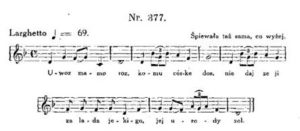
Figure 6. The musical score of the folk song ‘Uwoz mamo roz’ [19]
Most of the folk song’s text was set to music syllabically, in keeping with the principles of prosody. The melody features a small ambitus of a diminished seventh (C1–Bb1) and the significant role of the intervals: fourth, fifth and diminished sixth, usually obtained with jumps. As it has already been mentioned, the song is uniform in terms of its motifs, with its respective phrases appearing to take shape gradually. The characteristic trait of the first of these is the jump up by a fourth and (having circumscribed the tone G1) being led a fifth down, back to the initial sound (D1). The second phrase is characterised by a jump by a diminished sixth onto the B1 tone (with a triplet, an ornament), with the circumscription of the same tone as before (G1). The first phrase of the consequent is a precise repetition of its preceding phrase. In the subsequent one, the ambitus narrows down to a fourth, with an emphasis also placed on the role of a second (G1–A1). The final phrase features an accumulation of melismata. The whole structure is made coherent through the use of recurrent motifs, such as the sequence with a fourth and a second/third (bars 1, 6) or consisting of repeated tones, with a tone removed by a second/third between the repetitions (bars 1, 3, 5, 6, 7).
The song features a duple metre of 4/4. It is rife with various rhythmic devices, such as, for instance: a quarter note, a quarter triplet, two quarter notes; phrases often ending with a whole note (as an allusion to the phenomenon of the apocope, typical for the Kurpie region). In the piece, one is able to recognise many characteristic traits of Kurpie music, such as its slow tempo (Larghetto), the use of triplets, and the ornaments in the melodics; however, there are no metre changes, which are also typical of the region. The song bears a strong semantic relation with the text vie the indices used therein [20]. These are markedly melismatic keywords, such as: ‘mamo’ [mother] (bar 1), ‘komu’ [whom] (bar 3), ‘dajze’ [give] (bar 5), ‘urody’ [beauty] (bar 7) for the opening stanza, and, respectively, for the following ones (it is worth indicating here the words which were melismatically elaborated several times: ‘uroda’ [beauty], ‘pólno’ [field], ‘kogo’ [whom]).
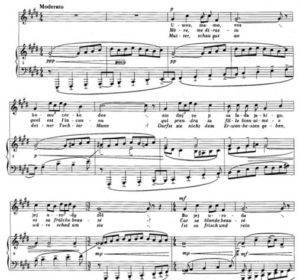
Figure 7. The score of the first stanza of the song ‘Uwoz mamo roz’ by Karol Szymanowski [21]
In the song by Karol Szymanowski, the shift of the tonal centre in the vocal part from D to G-sharp (Phrygian tonality), associated with the use of the higher register, is likely to have been aimed to obtain new, more profound expression. In the whole first stanza, the composer introduces the Kurpie melody intact, whereas the small, structurally non-invasive modifications in the course of the piece are introduced gradually. These alternations often consist in a change of the final tone of a phrase (bars 13–14: G#1 instead of C#2; bar 16: F#1 and A1 instead of G#1 and H1); the opening tone is less frequently subject to transformation (bar 17: G#1 instead of C#2). There is significance to the idea of extending tonal jumps, occurring continuously from the third stanza until the very end of the piece (bars 21, 21, 26: a diminished seventh instead of a diminished sixth, bar 25: a diminished sixth instead of a perfect fourth; bar 27: an octave instead of a diminished sixth). This is related to the melody gradually ascending into the upper register (difference of an augmented third between the penultimate phrases in the first and in the last stanza). Particularly significant, both for the melody and structure of the piece, is the initial motif of the melody, which through all the stanzas (with the exception of the concluding one) retains its original, folk form. Its transformation in the final stanza (the aforementioned bar 25) is associated with the culmination in bar 27 (an octave jump in the melody, accents, fortissimo, allargando). Despite all these devices, the artistic elaboration retains the form of the melodic line of the prototype, whereas its connection to the text remains very strong.
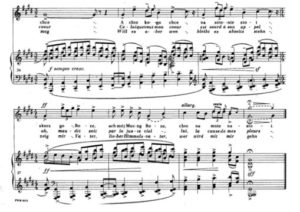
Figure 8. The score of the final stanza of the song ‘Uwoz mamo roz’ by Karol Szymanowski [22]
Compared with the folk piece, Szymanowski enlivens his song, introducing Moderato. He does not use – as opposed to the prototype – a single specific metre [23], as bars in 4/4 interchange with those in 3/2, especially in the final two stanzas. However, the rhythmic structure of the song does not change, compared with its folk counterpart; the composer merely shortens the final long notes in respective phrases, introducing rests there instead.
Szymanowski’s song could not exist without the piano accompaniment, which serves a tone colour function – it complements the timbre of the voice and makes it less predictable and monotonous than it is in the folk version. The characteristic features of the part of the instrument are the scale progressions, sets of parallel thirds, sixths and octaves, and parallel chords, usually structured as two-bar phrases. Each of the four stanzas has a distinct notion behind its piano part. Characteristic for the first is the use of the material from the introduction and the contrast between the upper and lower voice of the accompaniment (expressed through the oppositely directed phrases, different distribution of metrical accents, different type of melodics and distinct tonal material). In the second stanza, the texture of the piano part gains in density, as it turns into a four-part harmony, with a large fragment thereof being based on the same motifs used in parallel in octaves. In the third stanza, other voices are added to these in octaves, oftentimes moving in opposite directions and based on a different tonal material. The use of parallel dyads and chords (usually in the form of an octave and a fifth) intensifies, which comes to the forefront markedly in the final stanza.
Expression
The character of a folk song as a combination of the text and music is associated with melancholy, lyricism and longing. These qualities are conjured up through the introduction of modal material, slow tempo and motifs, with the key intervals therein being fourths and diminished sixths. In each stanza, we are able to indicate a constant point of emphasis placed on the second phrase of the antecedent. The path to culmination is manifested through a gradual development of motifs, fragmentation of the melody and its ascending movement. As is typical for stanzaic works, the dramaturgy of the piece as a whole, made of six identical stanzas, remains at a constant uniform level.
Compared with its folk original, the expression of Szymanowski’s song is much more varied and profound. Thanks to minor modifications of its melodics and instrumental elaboration, the piece gains new tonal quality. The sense of lyricism, atmosphere and intimacy becomes much more palpable here than it was in the folk song, whereas the final culmination is expressed through a decisive melodic movement, fortissimo dynamic, allargando and accents; thus, becoming much more marked and dramatic.
Conclusion
One cannot deny that Karol Szymanowski’s song Uwoz mamo roz, though largely based on genuine folklore, has artistic value of its own. By way of introducing minute modifications to the folk prototype, the composer created a small masterpiece. The said transformations are manifested both in the melodics (changes of individual tones, transposition of certain fragments of phrases to a higher register), rhythmics (the use of two metres), tonality (introduction of tonal orders other than the original Phrygian mode), as well as secondary features of a musical work (plane dynamics, frequent accents, change of the tempo). The piano part has unquestionable importance for the song, not only perfectly underscoring all the expressive features of the piece, but also enriching and complementing the timbre of the voice part, particularly in terms of the scale material added. Thanks to all these efforts, the song ‘Uwoz mamo roz’ appears to be an exceedingly satisfactory combination of folk and artistic idioms. Much like other pieces in the cycle of Kurpie Songs Op. 58, it does not merely constitute elaboration of folklore, but is on its own an interesting, original and valuable composition – ‘matching the highlights of Szymanowski’s vocal lyricism’ [24].
[1] J. Stęszewski, ‘“Pieśni kurpiowskie” w twórczości Karola Szymanowskiego,’ in Karol Szymanowski. Księga Sesji naukowej poświęconej twórczości Karola Szymanowskiego, Warszawa 1964, p. 276; as cited in A. Kłaput-Wiśniewska, ‘Retoryczna koncepcja “Pieśni kurpiowskich” Karola Szymanowskiego,’ Zeszyt naukowy Akademii Muzycznej im. F. Nowowiejskiego w Bydgoszczy, 5 (1993), p. 121.
[2] A Catholic priest. In the years 1925–1928, he devoted himself to collecting Kurpie folk melodies, which resulted in the publication of a three-volume collection titled Puszcza Kurpiowska w pieśni [The Kurpie Forest in Song]. He was the author of a theatre play Wesele na Kurpiach [Kurpie Wedding], which largely contributed to the propagation of the folk music of the region.
[3] As opposed to the earlier stages of reaching for universal and imaginary folklore. Based on M. Gorczycka, ‘Wpływy Szymanowskiego w XX-leciu międzywojennym,’ in Karol Szymanowski. Księga Sesji naukowej…, op. cit., as cited in A. Brejza, ‘Folklor jako źródło twórczości Igora Strawińskiego, Béli Bartóka i Karola Szymanowskiego,’ in Zeszyt naukowy Akademii Muzycznej…, op. cit., p. 141.
[4] M. Tomaszewski identifies three stages of Szymanowski’s work: the Modernist one (with its origin in late Romantic music), the Mediterranean one (with the influences of Impressionism and Expressionism, and the national one (with its characteristic fascination with Polish folklore). M. Tomaszewski, Nad pieśniami Karola Szymanowskiego. Cztery studia, Akademia Muzyczna im. K. Pendereckiego w Krakowie, Kraków 1998, p. 25.
[5] Z. Helman, ‘Pieśni Karola Szymanowskiego w kontekście literackim i muzycznym jego czasów,; in Pieśń w twórczości Karola Szymanowskiego i jemu współczesnych. Studia pod redakcją Zofii Helman, Musica Iagellonica, Kraków 2001, p. 18.
[6] Fig. 1 – the source:
https://pl.wikipedia.org/wiki/W%C5%82adys%C5%82aw_Skierkowski#/media/Plik:Puszcza_Kurpiowska_w_pie%C5%9Bni.JPG, accessed 05 Feb 2020.
[7] Fig. 2 – the source: https://pl.wikipedia.org/wiki/W%C5%82adys%C5%82aw_Skierkowski#/media/Plik:W%C5%82adys%C5%82aw_Skierkowski.jpg, accessed 05 Feb 2020.
[8] As indicated in W. Skierkowski, Puszcza Kurpiowska w pieśni, vol. 1, Związek Kurpiów, Ostrołęka 1997, p. 4.
[9] It is a subregion of the Mazovian dialect, retaining two of its basic features: the inter-word phonetics (voiceless pronunciation of the final consonant of the preceding word), and the so-called mazurzenie (the pronunciation of the alveolar consonants: sz, ż, cz, dż as retroflex consonants s, z, c, dz). W. Skierkowski, Puszcza Kurpiowska…, op. cit., p. 3.
[10] Ibid., p. 145.
[11] Ibid., p. 5.
[12] Fig. 3 – the source: https://pbc.gda.pl/dlibra/publication/6119/edition/14283/content, accessed 05 Feb 2020.
[13] Fig. 4 – the source: Ibid.
[14] T. Chylińska, ed., Karol Szymanowski. Korespondencja, vol. 4: 1932–1937, Musica Iagellonica, Kraków 2002, p. 151.
[15] Fig. 5 – the source: W. Skierkowski, Puszcza Kurpiowska w pieśni, vol. 2, Wydawnictwo Płockiego Towarzystwa Naukowego, Płock 1929, p. 144.
[16] Cf. W. Kopaliński, Słownik symboli, Oficyna Wydawnicza Rytm, Warszawa 2001, pp. 362–3.
[17] ‘A manner of developing an utterance consisting in the repetition and complementation of a preceding segment with a word or expression of the subsequent segment.’ J. Sławiński, ed., Słownik terminów literackich, ed. II, Zakład Narodowy im. Ossolińskich, Wrocław 1989, p. 236.
[18] The only exception being the final verse of the third stanza with its 6 syllables.
[19] Fig. 6 – the source: W. Skierkowski, Puszcza Kurpiowska…, vol. 2, op. cit., p. 144.
[20] The classification of signs according to Charles Sanders Peirce, as presented in M. Bristiger,Związki muzyki ze słowem. Z zagadnień analizy muzycznej, (Z prac Instytutu Sztuki Polskiej Akademii Nauk), ‘Biblioteka Res Facta,’ Warszawa 1986, pp. 162–3.
[21] Fig. 7 – the source: https://imslp.eu/files/imglnks/euimg/8/8f/IMSLP71155-PMLP142838-Szymanowsk–Kurpian-Songs-Op58–PWM-ed.pdf, accessed 05 Feb 2020.
[22] Fig. 8 – the source: Ibid.
[23] Thus, he is able to achieve in his song a trait typical for the music of the Kurpie region which the original, paradoxically, failed to include.
[24] T.A. Zieliński, Szymanowski: liryka i ekstaza, (Kompozytorzy polscy XX wieku), PWM, Kraków 1997, p. 310.